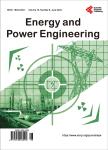Using Universal Line Model (ULM) for Representing Three-phase Lines
Using Universal Line Model (ULM) for Representing Three-phase Lines作者机构:Department of Electrical Engineering Universidade Estadual Paulista Ilha Solteira Brazil
出 版 物:《Energy and Power Engineering》 (能源与动力工程(英文))
年 卷 期:2013年第5卷第4期
页 面:1159-1164页
学科分类:07[理学] 0701[理学-数学] 070101[理学-基础数学]
主 题:Electromagnetic Transients Transmission Lines Modal Decomposition Distributed Parameters
摘 要:The second-order differential equations that describe the transmission line are difficult to solve due to the mutual coupling among phases and the fact that the parameters are distributed along their length. A method for the analysis of polyphase systems is the technique that decouples their phases. Thus, a system that has n phases coupled can be represented by n decoupled single-phase systems which are mathematically identical to the original system. Once obtained the n-phase circuit, it’s possible to calculate the voltages and currents at any point on the line using computational methods. The Universal Line Model (ULM) transforms the differential equations in the time domain to algebraic equations in the frequency domain, solve them and obtain the solution in the frequency domain using the inverse Laplace transform. This work will analyze the method of modal decomposition in a three-phase transmission line for the calculation of voltages and currents of the line during the energizing process.



